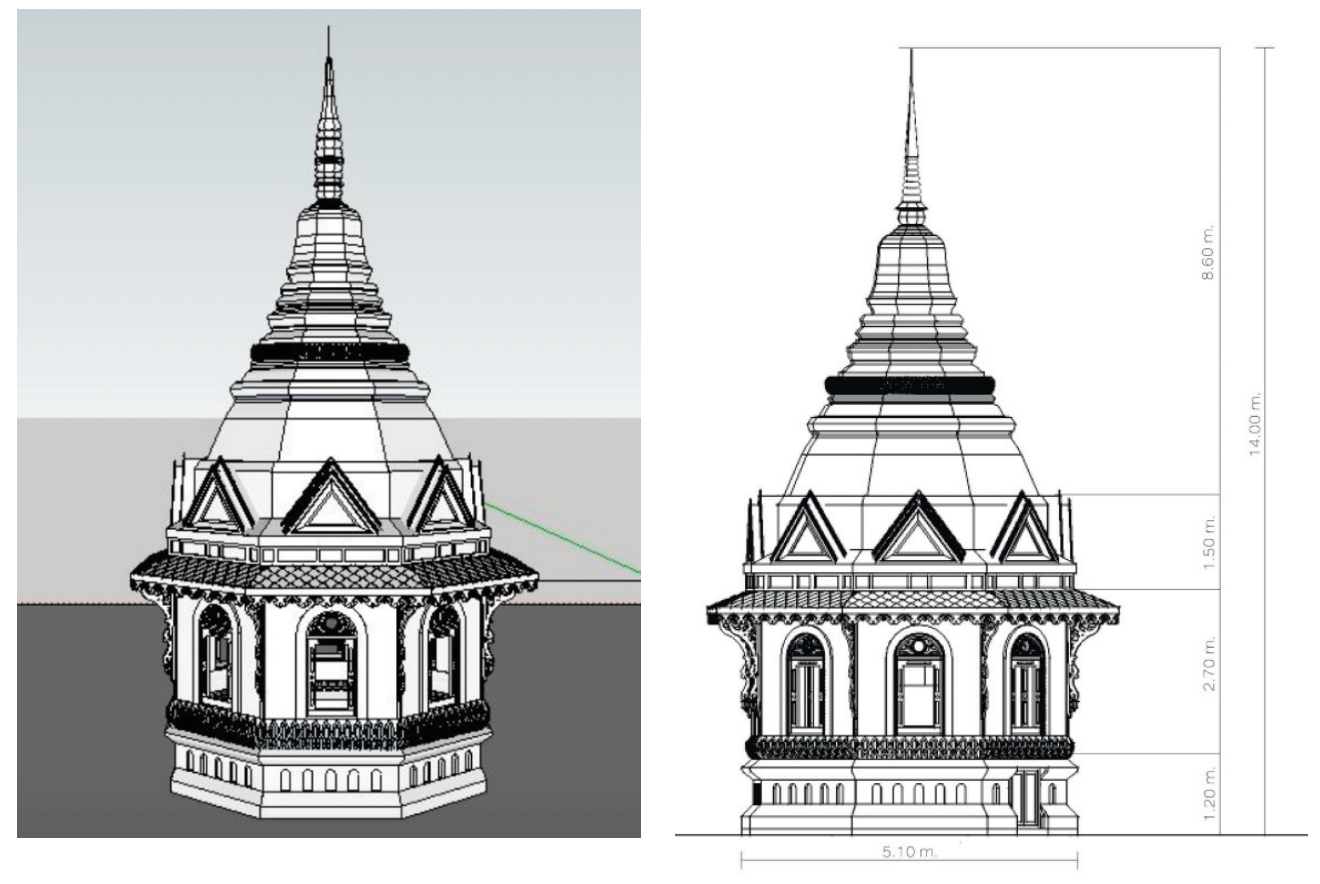Old Chedi of Wat Anam Nikayaram: Styles and Meanings of Various Architectural Statuses
DOI:
https://doi.org/10.69598/decorativeartsjournal.3.78%20-%2095Keywords:
old pagoda, Anam Nikayaram temple, architecture in various statesAbstract
The Bang Pho area of Bangkok shows signs of cultural diversity related to history and has affected the landscape, environment, and communities that exist today. This can be seen from the evidence of the Anam Nikayaram temple, the Vietnamese settlement, the traces of the ancient sites and the condition of the evidence related to the use of the area by the traditional community. The encroachment of temple areas, cemeteries, and pagodas from surrounding communities is a result of changes in ethnic identity. Assimilation of traditional communities which is one of the dynamics of cultures that can merge and blend together. Only the part of the monastery area that has been promoted is preserved as the identity of Vietnamese Buddhism. External historical sites related to traditional communities and related to the beliefs of the temple, it was still neglected, abandoned and lacked maintenance, leaving it in a very dilapidated condition. As a result, in addition to the external condition of important historical sites being damaged and their importance no longer visible. Mention of the history, meaning, function and importance that once existed has disappeared from the memory and awareness of the community. Studying to determine the exact meaning, function, and form of important ancient sites like the old Bang Pho Chedi is therefore extremely difficult. From the current state of decay and disrepair, it creates many doubts among those who see it, leading to questions about its changed status and importance. Reasons for abandonment, encroachment, direct designation of names and functions. Another thing is the emergence of art forms that come from various combinations. It invites you to think of a comparison with contemporary architecture that has been popular for a certain period of time or a combination of continuous modifications, additions, improvements until it becomes an architectural style that cannot be defined as any one thing in particular. This phenomenon that occurs in Thai architecture therefore leads to an examination of the clarity of form in a state where architecture is viewed as a creation outside of traditional art conventions.
References
กรมศิลปากร. (2561). องค์ความรู้เรื่องรูปแบบ ลวดลายประดับ และวัสดุก่อสร้าง ของปรางค์สมัยอยุธยา. เทียนวัฒนา.
เฉลิม รัตนทัศนี. (2539) วิวัฒนาการสถาปัตยกรรมไทยพุทธสาสนา. อมรินทร์พริ้นติ้ง แอนด์ พับลิซซิ่ง.
โชติ กัลยาณมิตร. (2539) สถาปัตยกรรมไทยเดิม. มหาวิทยาลัยธรรมศาสตร์.
นารถ โพธิประสาท. (2513) สถาปัตยกรรมในประเทศไทย. ไทยวัฒนาพานิช.
ผุสดี ทิพทัส. (2530). หลักเบื้องต้นในการจัดองค์ประกอบในสถาปัตยกรรม. ไทนวัฒนาพานิช.
วิโรจน์ ชีวาสุขถาวร. (2562). ประวัติศาสตร์สถาปัตยกรรมไทย:พัฒนา แนวความคิด และการคลึ่คลายรูปแบบ. อภิชาติการพิมพ์.
ศิลป พีระศรี. (2512). ประวัติศาสตร์และแบบอย่างศิลป์ แปลและเรียบเรียงโดย เขียน ยิ้มศิริ. สยามการพิมพ์.
สมคิด จิระทัศนกุล.(2546). คติ สัญลักษณ์ และความหมาย ของซุ้มประตู-หน้าต่างไทย. อมรินทร์พริ้นติ้งแอนด์พัชลิชชิ่ง.
สันติ เล็กสุขุม. (2535). เจดีย์. มติชน.
อนุวิทย์ เจริญศุภกุล. (2512). สถาปนิก สถาปัตยกรรมและแบบแผนนิยม. กรุงสยามการพิมพ์

Downloads
Published
How to Cite
Issue
Section
Categories
License
Copyright (c) 2024 DEC Journal

This work is licensed under a Creative Commons Attribution-NonCommercial-NoDerivatives 4.0 International License.
Published by Academic Affairs Division, Faculty of Decorative Arts, Silpakorn University. The copyright of the article belongs to the article owner. Published articles represent the views of the authors. The editorial board does not necessarily agree with and is not responsible for the content of such articles.


